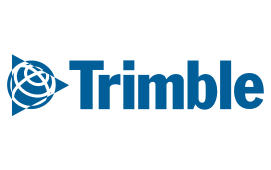Estimating the Future
Project estimators are often working with prices that might be valid in the near future only––say from six to nine months out. Labor and materials predictions can be sufficient for these shorter term projects. But what about long-term estimating needs? How can predictions be accurate enough to ensure that the contractor will benefit from taking on a future project? We have some advise for you.
Use Existing Data
Databases of compiled pricing information and trends are one way to work against uncertainty. Whether contractors choose an in-house compilation or opt for outsourcing the task, they want to be sure that records were kept over a long enough period of time to be helpful. Using data compiled over several years’ time and related to a project at hand can be useful when making projections for projects that might stretch over a similar time period in the future. This data can then inform bidding. Of course projections are only proven true or false after the fact, but using related records can go far to improve overall accuracy.
Count on Labor
One key factor to include is labor rates, which are always in flux. Various national organizations are aware of already negotiated rates, but these are not always made readily available to estimators. Requesting this information from clients or local chapters is one way to be sure that estimated labor rates are relevant. It’s not likely that any guess will be made regarding future rates, but even so, trends can be seen in recorded rate shifts. Also on the labor front, estimators will need to determine whether there will be a sufficient pool of workers to draw from when the project goes live. Governmental departments and local news outlets can provide a good sense of any activity in these sectors.
Factor in Material
Pricing material is generally not as tricky of an endeavor as prices aren’t usually as volatile as they can be in labor. One exception to this loose rule could be copper, in any form. Again, staying on top of current news regarding commodity prices and futures along with observed trends can offer a path forward. A clear price likely will not emerge, but signals can indicate imminent rises and falls. Any other material that will affect a project, such as steel, can also be evaluated and tracked in this way. Escalation clauses where precious metals like silver are concerned could be required, and these typically specify that final price is dependent on the market cost at time of delivery. This can make estimating difficult, but some of the uncertainty can be headed off by negotiating price protection with vendors or even buying and storing materials ahead of time.
Use National Data
Economic statistics also have their place. Engineering News Record (ENR) published statistics on building material prices span any given year and can give a clue to near-term ups and downs, acting as a valuable reference. The Department of Labor Cost of Living (COL) Index is another database to look into. The clear point here is that making predictions is a tricky endeavor, and pulling from as many resources as possible is a best practice for today’s estimators.
Depend on Estimating Experts
General contractors and business owners rely on electrical estimators’ figures and other trade-specific cost estimates––they need to know that they’re working with experts. If you need to provide a well-researched and accurate estimate for your next electrical project, please reach out to Charter Estimating Company. Our team of experts is ready to provide you with a report that will make your job that much easier.

Contact Us
Schedule a Consultation
(*) - Required field
Our Partners




